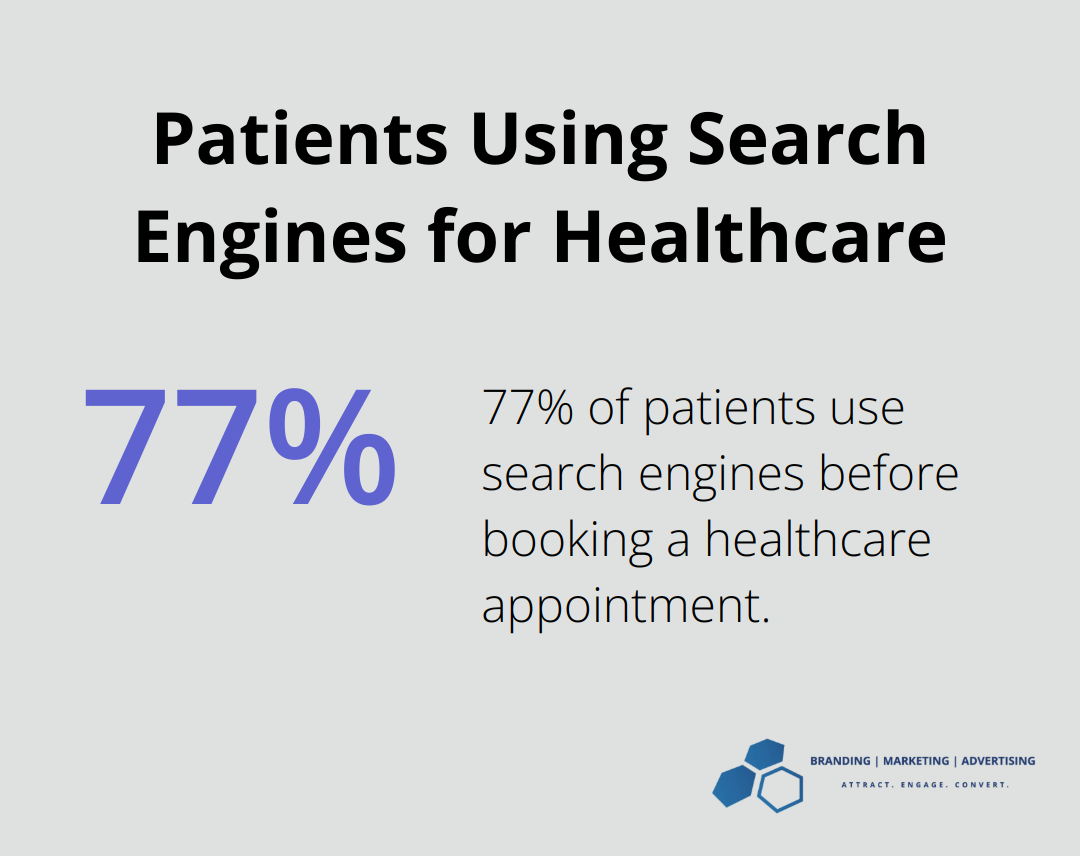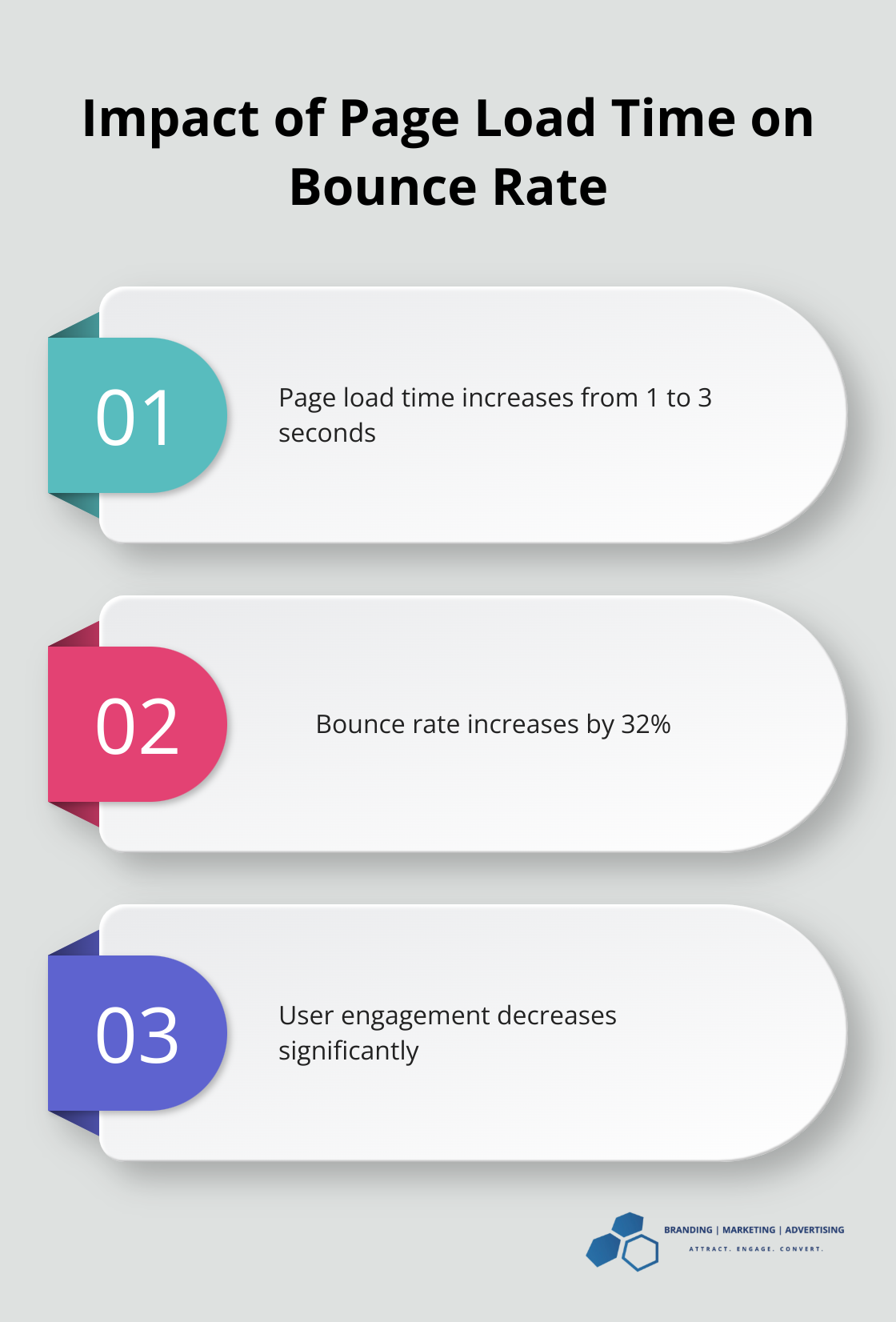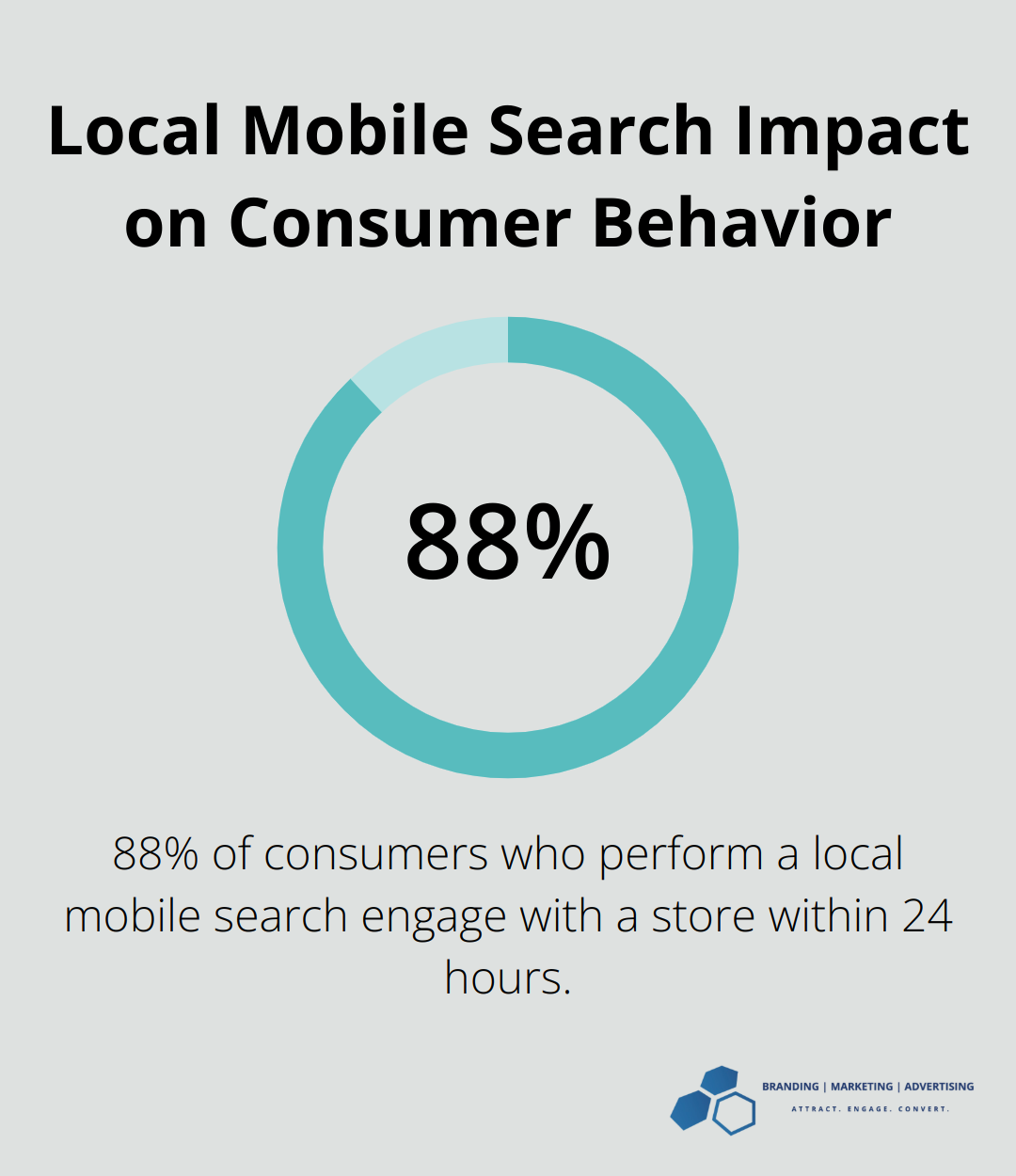Optimizing Your Healthcare Website for Mobile Users
At Branding | Marketing | Advertising, we’ve seen a surge in healthcare mobile searches. More patients are turning to their smartphones for medical information and services.
This shift demands healthcare providers to adapt their online presence. Our guide will help you optimize your healthcare website for mobile users, improving accessibility and patient engagement.
How Mobile Users Interact with Healthcare Websites
The Mobile Health Revolution
Mobile healthcare searches have skyrocketed in recent years. This trend has profound implications for healthcare providers and their online strategies.
A study shows that 77% of patients use search engines before booking a healthcare appointment. This shift towards mobile isn’t just about convenience; it reshapes the entire patient journey.

Common Mobile Healthcare Tasks
Patients primarily use their smartphones for three key healthcare tasks:
- Symptom research and self-diagnosis
- Finding and contacting healthcare providers
- Booking appointments
Meeting Mobile User Expectations
Mobile users expect fast, seamless experiences. For healthcare providers, this fact underscores the importance of optimizing website speed.
Users also expect easy navigation and clear calls-to-action. Websites with prominent “Book Appointment” buttons see a 28% increase in conversion rates.
Mobile-First Design: A Necessity
Google’s emphasis on mobile-first indexing means that user experience on mobile devices can significantly impact SEO rankings. Healthcare providers without mobile-friendly sites risk losing potential patients to competitors.
Responsive design that adapts seamlessly to all screen sizes (smartphones, tablets, or desktops) ensures a consistent, user-friendly experience for patients.
Voice Search Optimization
The rise of voice assistants like Siri and Google Assistant has changed how patients search for healthcare information. Long-tail keywords and natural language queries have become increasingly important. SEO strategies now incorporate voice search optimization to ensure healthcare websites appear in these conversational searches.
Prioritizing Local SEO
For healthcare providers, local visibility is paramount. Optimizing for “near me” searches and ensuring complete and accurate Google Business Profiles helps improve local visibility.
Understanding mobile user behavior sets the foundation for creating an effective mobile healthcare website. The next chapter will explore the key elements that make a healthcare website truly mobile-friendly and user-centric.
What Makes a Healthcare Website Mobile-Friendly?
At Branding | Marketing | Advertising, we’ve identified key elements that transform a healthcare website into a mobile-friendly powerhouse. These features enhance user experience and boost your site’s performance in search rankings.
Responsive Design: Adapting to All Screens
Responsive design is essential for healthcare websites. It ensures your site looks great and functions well on all devices (smartphones, tablets, and desktops). A study by Google found that 53% of mobile users abandon a site if it takes more than 3 seconds to load, and mobile-optimized websites load faster, keeping users engaged.
To implement responsive design effectively:
- Use flexible layouts and grid systems
- Employ scalable images and media
- Utilize CSS media queries to adjust content based on screen size
A responsive design doesn’t just shrink content. It reimagines your site’s layout for optimal viewing on smaller screens.
Speed: The Silent Conversion Killer
Page speed is vital for mobile users. According to research, if a page loading time goes from 1 second to 3, businesses see their bounce rate increase by 32%. To optimize your healthcare website’s speed:

- Compress images and use next-gen formats like WebP
- Minimize HTTP requests
- Leverage browser caching
- Use a content delivery network (CDN)
These optimizations will ensure your site loads quickly on all devices.
User-Friendly Navigation: Guiding the Patient Journey
Mobile users have limited screen space and often use their devices on-the-go. Clear, intuitive navigation is essential. Here’s how to optimize:
- Use a hamburger menu for main navigation items
- Implement a search function prominently
- Create large, touch-friendly buttons
- Use breadcrumbs for easy backtracking
A well-designed navigation system can reduce bounce rates and increase time on site (both crucial factors for SEO performance).
Simplified Forms: Removing Barriers to Action
For healthcare websites, forms are often the primary conversion point. Whether it’s appointment booking or contact requests, these forms need mobile optimization. Tips for mobile-friendly forms include:
- Use single-column layouts
- Implement auto-fill where possible
- Use appropriate input types (e.g., date pickers for appointment scheduling)
- Break long forms into multiple steps
Simplifying your forms can significantly increase completion rates.
Continuous Improvement: The Key to Mobile Success
Mobile optimization is an ongoing process. Regular testing and refinement ensure your site continues to meet the evolving needs of mobile users. As we move forward, we’ll explore how to implement mobile SEO strategies that will further enhance your healthcare website’s performance and visibility.
How to Boost Your Healthcare Website’s Mobile SEO
At Branding | Marketing | Advertising, we understand the importance of mobile SEO for healthcare websites. The increasing number of patients using smartphones to search for medical information and services makes optimizing your site for mobile essential.
Master Local SEO for Healthcare
Local SEO is vital for healthcare providers. A study shows that 88% of consumers who execute a local search on their smartphone engage with a store within 24 hours. To improve your local SEO:

- Claim and optimize your Google Business Profile
- Ensure consistent NAP (Name, Address, Phone) information across all online directories
- Encourage and respond to patient reviews
- Create location-specific content and landing pages
Local SEO connects patients with the care they need.
Optimize for Voice Search in Healthcare
Voice search changes how patients find healthcare information. Recent predictions suggest that voice searches are expected to increase by 20% by 2025. To optimize for voice:
- Focus on natural language and conversational keywords
- Create FAQ pages that address common health queries
- Optimize for featured snippets to increase chances of being the voice search result
- Use schema markup to help search engines understand your content
Voice search optimization can significantly improve your visibility in mobile search results.
Understand Mobile-First Indexing for Healthcare Providers
Google’s mobile-first indexing means that the mobile version of your website is now the starting point for what Google includes in their index. To ensure your site is ready:
- Make sure Googlebot can access and render your content
- Ensure parity of content between mobile and desktop versions
- Use the same meta robots tags on the mobile and desktop site
- Include the same structured data on both versions of the site
Mobile-first indexing creates a seamless experience across all devices.
Speed Up Your Mobile Healthcare Website
Page speed is a critical ranking factor, especially on mobile. Google reports that 53% of mobile site visits are abandoned if pages take longer than 3 seconds to load. To improve your site’s speed:
- Compress images and use next-gen formats
- Minimize HTTP requests
- Leverage browser caching
- Use a content delivery network (CDN)
Faster loading times not only improve your SEO but also enhance user experience, leading to higher engagement and conversion rates.
Final Thoughts
The shift towards mobile in healthcare demands immediate action from providers. A mobile-optimized website enhances patient access to care and improves online visibility. Healthcare organizations must prioritize responsive design, speed optimization, local SEO, and voice search readiness to meet the expectations of mobile-first patients.
The future of healthcare mobile technology promises exciting advancements in telemedicine, AI-powered patient support, and personalized health apps. These developments underscore the need for healthcare providers to stay ahead in their mobile strategies. We encourage healthcare practices to assess their current mobile performance and identify areas for improvement.
At Branding | Marketing | Advertising, we help healthcare providers navigate the complex world of digital marketing and mobile optimization. Our team conducts comprehensive assessments and develops tailored strategies to enhance mobile presence. Visit our website to learn how we can help your healthcare practice thrive in the mobile era.












